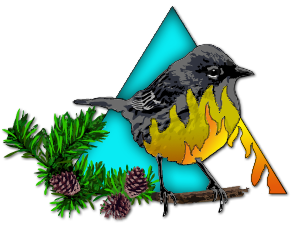Navigation

Fire Effects Research in the Lake States
Fire Effects
Burn severity, vegetative responses, and impacts on animal populations, water and soil
| Publications | Presentations | Monitoring Fire Effects | Other Fire Effects Resources |
Publications
Rainbow Series:
Volume I. Wildland fire in ecosystems: effects of fire on fauna. 2000.
Volume II. Wildland fire in ecosystems: effects of fire on flora. 2000.
Volume III. Wildand fire in ecosystems: effects of fire on cultural resources and archaeology. 2012.
Volume IV. Wildand fire in ecosystems: effects of fire on soil and water. 2005.
Volume V. Wildand fire in ecosystems: effects of fire on air. 2002.
Volume VI. Wildand fire in ecosystems: fire and nonnative invasive plants. 2008.
Effects of prescribed burning on hazel in Minnesota. 1964.
Influence on soil properties of prescribed burning under mature red pine. 1977.
Fire Monitoring Handbook. 2003
FOFEM:
The First-Order Fire Effects Model Adapts to the 21st Century. 2009.
Ecological effects of prescribed fire season: a literature review and synthesis for managers. 2009.
Experimental drying intensifies burning and carbon losses in a northern peatland. 2011.
(Summary of the research, Wildland Fire Lessons Learned Center)
Cumulative watershed effects of fuel management in the Eastern United States. 2012.
Presentations
Fire effects on the highly invasive Oriental bittersweet (Oct 2012)
Prescribed fire and timber quality. (April 2012) A presentation by Joe Marschall, coordinator of the Oak Woodlands and Forests Fire Consortium. His study tracked loss of lumber volume, quality and value in the butt log due to fire damage to the bole.
Variability and Persistence of Post-fire Biological Legacies in Michigan Jack Pine Forests (Feb 2012)
Monitoring Fire Effects with FFI (Nov 2011)
An Overview of the Monitoring Trends in Burn Severity (MTBS) Project and Field-Based Burn Severity Assessment (April 2011)
Wildland Fire and Mercury Contamination in Soil and Water (Feb 2011)
Fire, Vegetation, and Birds in Northern
Sedge Meadows - Lessons Learned At Seney NWR (Dec 2010)
Other Fire Effects Resources
Monitoring Fire Effects. Online sources for information on evaluating and monitoring the effects of fire.
S-244 Field Observer/Fire Effects Monitor Supplemental Video Lessons. Video lessons and additional material that supplement the National Wildfire Coordinating Group's (NWCG) merged Field Observer course.
FFI (FEAT-FIREMON Integrated) is a monitoring software tool that can help with your data storage, analysis and reports. For those of you who just want to track treatments and compare conditions by sampling before and afterwards, FFI provides a wide variety of pre-defined sampling protocols and associated input forms. More than that, it also provides you with means to define and create input forms for sampling techniques not yet defined in the system.
Pagami Creek Fire Severity Study. A rapid field research and remote sensing campaign led by USFS to apply hyperspectral imagery to scale fire severity (understory and overstory) and loss of soil element emissions (carbon, nitrogen, and mercury) to the full extent of the Pagami Creek fire.
Composite Burn Index (CBI) Photo Series. Uses plot data and photos to illustrate the range of burn severity encountered in different ecosystems of the U.S.
National Fuel Moisture Database. Access data and graphs of soil and fuel moisture.
Canadian Fire Effects Model (CanFIRE) is a compilation of Canadian fire behavior models that are used to calculate first-order (immediate, physical) fire effects on stand characteristics, and to simulate the resulting second-order (later, ecological) fire effects on stand composition.
Fuel Loading Model. This surface fuel classification system provides a simple and consistent way for managers to describe onsite fuel for input into fire behavior and effects models.
First Order Fire Effects Model can derive fuel loads from Fuel Loading Model and a variety of vegetation classifications to model fuel consumption and smoke emissions, among other fire effects.

.png)